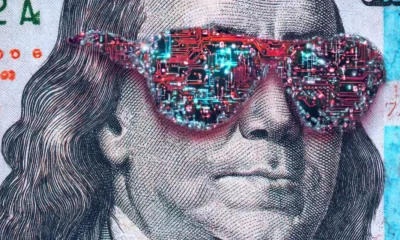

others
Main indexes edge lower ahead of key risk events – Crypto News
- Wall Street’s main indexes trade marginally lower to start the week.
- S&P 500 and Nasdaq Composite closed the previous at new all-time highs.
- Fed Chairman Powell will testify before Congress later in the week.
The Dow Jones Industrial Average (DJIA) is down 0.27% on the day at 38,984.90, the S&P 500 (SPX) loses 0.08% at 5,132.75 and the Nasdaq Composite (IXIC) falls 0.16% at 16,248.30 in the first half of the session on Monday.
Stock market news
The Utilities Sector is up nearly 1% as the best performing major S&P sector on Monday. On the other hand, the Communication Services Sector is down nearly 1.7%.
Hewlett Packard Enterprise Co. (HPE) and PNC Financial Services Group Inc. (PNC) shares stand out as top gainers, rising 9.5% and 5%, respectively. Tesla Inc. (TSLA) and Paramount Global (PARA) both lose over 5%.
The Dow Jones Industrial Average (DJIA) closed the previous week virtually unchanged at 39,087.39, the S&P 500 (SPX) rose nearly 1% to close at a new all-time high of 5,137.07 and the Nasdaq Composite (IXIC) added over 1% to end at a record of 16,274.94.
Assessing the latest developments in equity markets, “the S&P 500 gained +0.95% last week (and +0.80% on Friday), meaning the index has now recorded positive weekly gains for 16 out of the last 18 weeks, the first time since 1971,” noted Jim Reid, global head of economics and thematic research at Deutsche Bank, and continued:
“Talking of milestones, the Russell 2000 reached its highest level since April 2022, jumping +2.96% on the week (and +1.05% on Friday), so the rally was fairly broad. But it was tech stocks that led Friday’s sizeable rally, with the Magnificent 7 up +1.27% (+1.74% over the week). A strong earnings beat by Dell Technologies (+31.62% Friday) lifted semiconductor stocks (+4.29%) and saw Nvidia (+4.00%) move above $2trn market cap for the first time.”
S&P 500 FAQs
The S&P 500 is a widely followed stock price index which measures the performance of 500 publicly owned companies, and is seen as a broad measure of the US stock market. Each company’s influence on the computation of the index is weighted based on market capitalization. This is calculated by multiplying the number of publicly traded shares of the company by the share price. The S&P 500 index has achieved impressive returns – $1.00 invested in 1970 would have yielded a return of almost $192.00 in 2022. The average annual return since its inception in 1957 has been 11.9%.
Companies are selected by committee, unlike some other indexes where they are included based on set rules. Still, they must meet certain eligibility criteria, the most important of which is market capitalization, which must be greater than or equal to $12.7 billion. Other criteria include liquidity, domicile, public float, sector, financial viability, length of time publicly traded, and representation of the industries in the economy of the United States. The nine largest companies in the index account for 27.8% of the market capitalization of the index.
There are a number of ways to trade the S&P 500. Most retail brokers and spread betting platforms allow traders to use Contracts for Difference (CFD) to place bets on the direction of the price. In addition, that can buy into Index, Mutual and Exchange Traded Funds (ETF) that track the price of the S&P 500. The most liquid of the ETFs is State Street Corporation’s SPY. The Chicago Mercantile Exchange (CME) offers futures contracts in the index and the Chicago Board of Options (CMOE) offers options as well as ETFs, inverse ETFs and leveraged ETFs.
Many different factors drive the S&P 500 but mainly it is the aggregate performance of the component companies revealed in their quarterly and annual company earnings reports. US and global macroeconomic data also contributes as it impacts on investor sentiment, which if positive drives gains. The level of interest rates, set by the Federal Reserve (Fed), also influences the S&P 500 as it affects the cost of credit, on which many corporations are heavily reliant. Therefore, inflation can be a major driver as well as other metrics which impact the Fed decisions.
Eyes on Powell testimony and US jobs data
In its Semi-annual Monetary Policy Report published on Friday, the Federal Reserve (Fed) reiterated that it’s not appropriate to reduce the policy rate until they have greater confidence inflation will move sustainably toward 2%.
Fed Chairman Jerome Powell will present the monetary policy report and respond to questions in a two-day testimony before the Congress, starting Wednesday.
On Friday, the US Bureau of Labor Statistics will release February jobs report, which will include Nonfarm Payrolls, the Unemployment Rate and wage inflation figures.
Week’s focus on Powell testimony, US jobs, ECB decision [Video]
Fed FAQs
Monetary policy in the US is shaped by the Federal Reserve (Fed). The Fed has two mandates: to achieve price stability and foster full employment. Its primary tool to achieve these goals is by adjusting interest rates.
When prices are rising too quickly and inflation is above the Fed’s 2% target, it raises interest rates, increasing borrowing costs throughout the economy. This results in a stronger US Dollar (USD) as it makes the US a more attractive place for international investors to park their money.
When inflation falls below 2% or the Unemployment Rate is too high, the Fed may lower interest rates to encourage borrowing, which weighs on the Greenback.
The Federal Reserve (Fed) holds eight policy meetings a year, where the Federal Open Market Committee (FOMC) assesses economic conditions and makes monetary policy decisions.
The FOMC is attended by twelve Fed officials – the seven members of the Board of Governors, the president of the Federal Reserve Bank of New York, and four of the remaining eleven regional Reserve Bank presidents, who serve one-year terms on a rotating basis.
In extreme situations, the Federal Reserve may resort to a policy named Quantitative Easing (QE). QE is the process by which the Fed substantially increases the flow of credit in a stuck financial system.
It is a non-standard policy measure used during crises or when inflation is extremely low. It was the Fed’s weapon of choice during the Great Financial Crisis in 2008. It involves the Fed printing more Dollars and using them to buy high grade bonds from financial institutions. QE usually weakens the US Dollar.
Quantitative tightening (QT) is the reverse process of QE, whereby the Federal Reserve stops buying bonds from financial institutions and does not reinvest the principal from the bonds it holds maturing, to purchase new bonds. It is usually positive for the value of the US Dollar.
-

 Technology1 week ago
Technology1 week agoApple iPhone 16 price drops to ₹40,990 in Croma’s Cromtastic December Sale: How the deal works – Crypto News
-

 Blockchain1 week ago
Blockchain1 week agoThis Week in Stablecoins: Winning the Back Office – Crypto News
-

 Technology1 week ago
Technology1 week agoApple iPhone 16 price drops to ₹40,990 in Croma’s Cromtastic December Sale: How the deal works – Crypto News
-
Business1 week ago
XRP Holders Eye ‘Institutional Grade Yield’ as Ripple Engineer Details Upcoming XRPL Lending Protocol – Crypto News
-

 Technology1 week ago
Technology1 week agoApple iPhone 16 price drops to ₹40,990 in Croma’s Cromtastic December Sale: How the deal works – Crypto News
-

 Blockchain7 days ago
Blockchain7 days agoLitecoin Follows Bitcoin’s Momentum, But Resistance Looms At $79.60 – Crypto News
-
Business1 week ago
DOGEBALL Presale: A Boost to Bring P2E Games Back into the Spotlight – Crypto News
-

 Technology7 days ago
Technology7 days agoApple iPhone 15 price drops to ₹36,490 in Croma Cromtastic December Sale: How the deal works – Crypto News
-

 Technology6 days ago
Technology6 days agoSamsung Galaxy S25 Ultra price drops to ₹69,999 at Croma Cromtastic December Sale? Here’s how the deal works – Crypto News
-

 others1 week ago
others1 week agoAustralian Dollar loses as US Dollar advances before Michigan Sentiment Index – Crypto News
-
others1 week ago
XRP Holders Eye ‘Institutional Grade Yield’ as Ripple Engineer Details Upcoming XRPL Lending Protocol – Crypto News
-

 Blockchain7 days ago
Blockchain7 days agoCrypto Market Sentiment Not Fearful Enough For Bottom: Santiment – Crypto News
-
Business1 week ago
125 Crypto Firms Mount Unified Defense as Banks Push to Block Stablecoin Rewards – Crypto News
-

 Blockchain7 days ago
Blockchain7 days agoCrypto Market Sentiment Not Fearful Enough For Bottom: Santiment – Crypto News
-
Business1 week ago
Ethereum Faces Selling Pressure as BitMEX Co-Founder Rotates $2M Into DeFi Tokens – Crypto News
-

 others6 days ago
others6 days agoBillionaire Ray Dalio Says Bitcoin Has Problems, Calls Crypto Asset Inferior to Gold – Crypto News
-
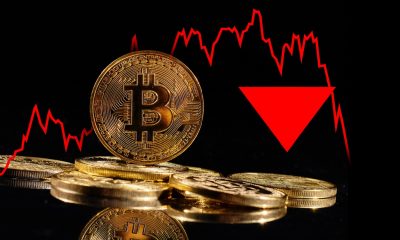
 Blockchain1 week ago
Blockchain1 week agoBitcoin on Track For 4th Annual Decline Despite Crypto Adoption – Crypto News
-
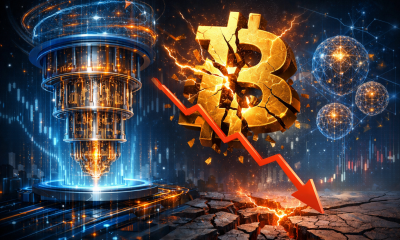
 Cryptocurrency1 week ago
Cryptocurrency1 week agoWhy quantum computing is becoming a real concern for Bitcoin – Crypto News
-
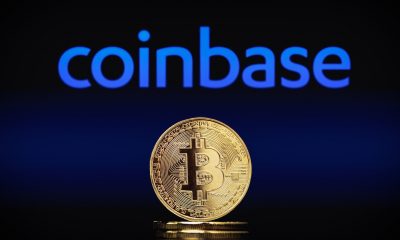
 Blockchain1 week ago
Blockchain1 week agoCoinbase Launches Service to Help Businesses Create Tokens – Crypto News
-
Business1 week ago
Bitcoin Price Alarming Pattern Points to a Dip to $80k as $2.7b Options Expires Today – Crypto News
-

 Metaverse1 week ago
Metaverse1 week agoAI Tool of the Week: Transform marketing concepts instantly. – Crypto News
-
Technology1 week ago
Michael Saylor Sparks Debate Over Bitcoin’s Quantum Risk as Bitcoiners Dismiss It as ‘FUD’ – Crypto News
-

 Blockchain7 days ago
Blockchain7 days agoLitecoin Follows Bitcoin’s Momentum, But Resistance Looms At $79.60 – Crypto News
-

 Technology6 days ago
Technology6 days agoSam Altman teases ChatGPT Christmas Easter egg that turns your selfie into a Santa message: How it works – Crypto News
-

 Cryptocurrency6 days ago
Cryptocurrency6 days agoKey Drivers & Technical Outlook – Crypto News
-
Business1 week ago
Breaking: VanEck Discloses Fees and Staking Details for its Avalanche ETF – Crypto News
-
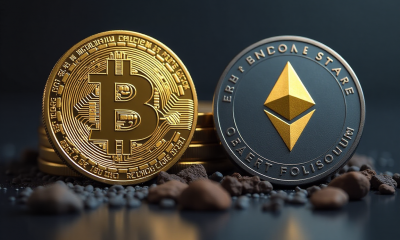
 Cryptocurrency1 week ago
Cryptocurrency1 week agoBTC at $143K, ETH above $4000: Citi issues bullish price forecasts as crypto market continues to struggle – Crypto News
-
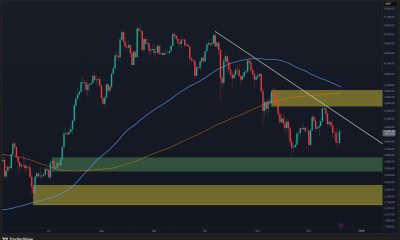
 Cryptocurrency1 week ago
Cryptocurrency1 week agoIs ETH Ready for Sustained Recovery or Another Rejection Looms? – Crypto News
-
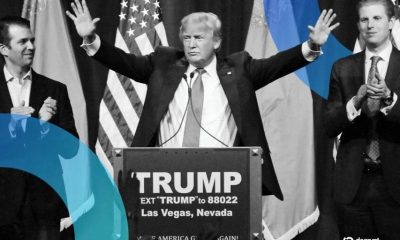
 Cryptocurrency1 week ago
Cryptocurrency1 week agoCrypto Industry Must Make Progress Before Trump Leaves Office: Etherealize Co-Founder – Crypto News
-

 Cryptocurrency1 week ago
Cryptocurrency1 week agoCrypto Industry Must Make Progress Before Trump Leaves Office: Etherealize Co-Founder – Crypto News
-
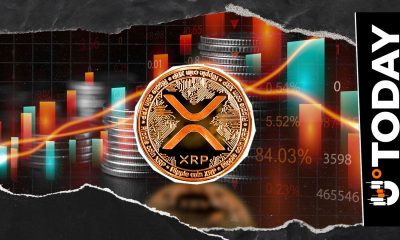
 Cryptocurrency1 week ago
Cryptocurrency1 week agoXRP Could Add Zero If Rally Is Short-Lived – Crypto News
-

 Cryptocurrency6 days ago
Cryptocurrency6 days agoCrypto Game Crashouts: The Biggest Shutdowns in 2025 – Crypto News
-
Technology6 days ago
Canary Capital Announces Major Changes to Its SUI ETF – Crypto News
-
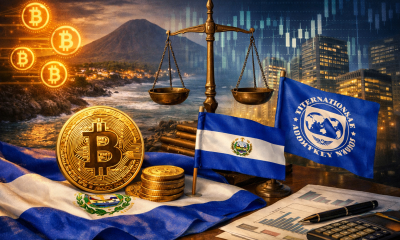
 Cryptocurrency4 days ago
Cryptocurrency4 days agoIMF advances talks with El Salvador on Bitcoin policy and Chivo wallet future – Crypto News
-

 Blockchain1 week ago
Blockchain1 week agoCiti Pulls Blockchain Into the Banking Core – Crypto News
-

 Blockchain1 week ago
Blockchain1 week agoMastercard, BlackRock Join Middle East-Focused Blockchain Effort – Crypto News
-

 Technology1 week ago
Technology1 week agoFrom chibi to plushie: 7 Must-try AI portraits you can create with GPT Image 1.5 – Crypto News
-

 Technology1 week ago
Technology1 week agoFrom chibi to plushie: 7 Must-try AI portraits you can create with GPT Image 1.5 – Crypto News
-

 Cryptocurrency1 week ago
Cryptocurrency1 week agoBitMine Tops Up Treasury With $300 Million in Ethereum – Crypto News
-
others1 week ago
Trump to Interview BlackRock’s Rick Rieder as Fed Chair Shortlist Narrows to Four – Crypto News
-
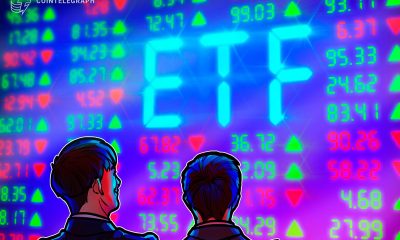
 Blockchain1 week ago
Blockchain1 week agoBlackRock’s IBIT Ranks 6th in ETF Flows Despite Negative Returns – Crypto News
-
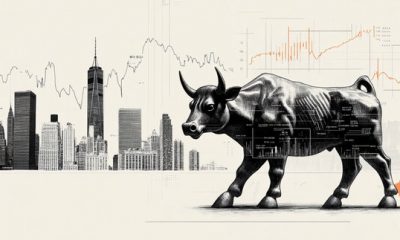
 others1 week ago
others1 week agoElliott Wave, seasonality, and cycles indicate more upside – Crypto News
-

 others1 week ago
others1 week agoElliott Wave, seasonality, and cycles indicate more upside – Crypto News
-

 Blockchain1 week ago
Blockchain1 week agoWhy XRP Price Is Playing Catch-Up Despite Successful ETF Launch: Analyst – Crypto News
-

 Blockchain1 week ago
Blockchain1 week agoBlockchain and AI Vibe-Coding To Dethrone Amazon Web Servies: Crypto exec – Crypto News
-

 Blockchain1 week ago
Blockchain1 week agoBanks Need XRP To Be Pricier—Here’s Why A Finance Expert Says So – Crypto News
-
Business1 week ago
Breaking: Rep. Max Miller Unveils Crypto Tax Bill, Includes De Minimis Rules for Stablecoins – Crypto News
-
others1 week ago
Australia CFTC AUD NC Net Positions down to $-629K from previous $-84.2K – Crypto News
-
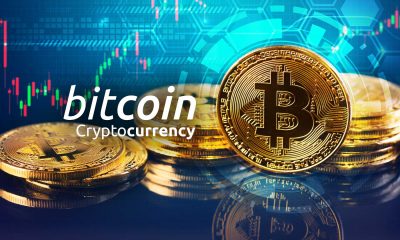
 Cryptocurrency1 week ago
Cryptocurrency1 week agoBitcoin Breaks a 10-Year Correlation With Stocks What Past Cycles Signal for 2026 – Crypto News
-
others1 week ago
Best Crypto Casinos in Germany 2025 – Crypto News



